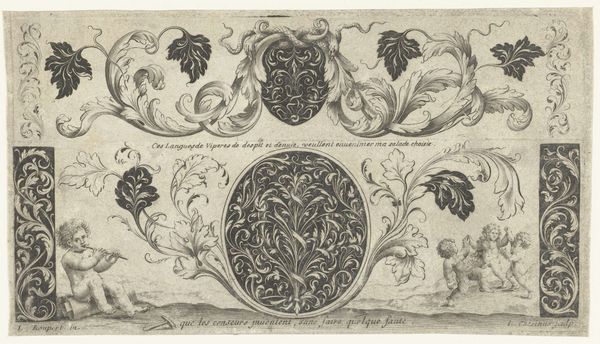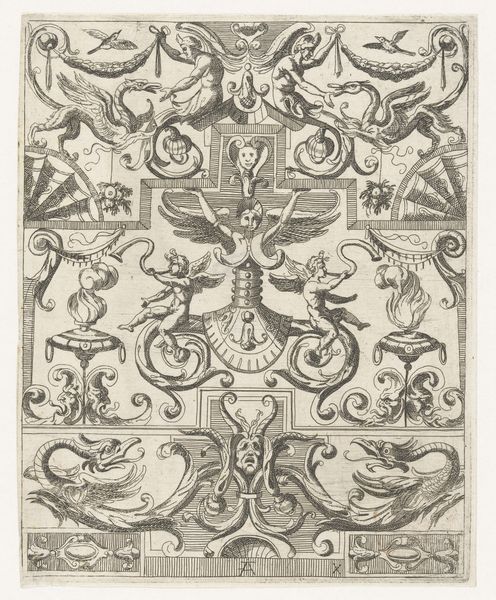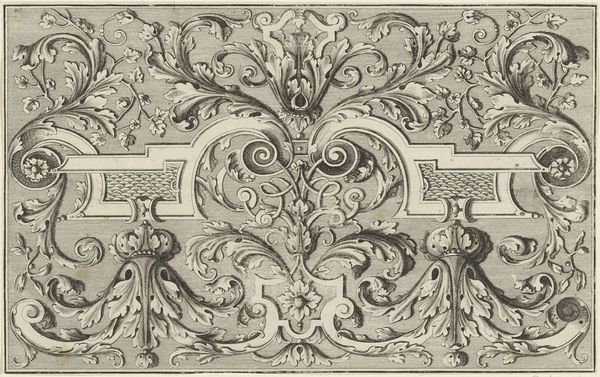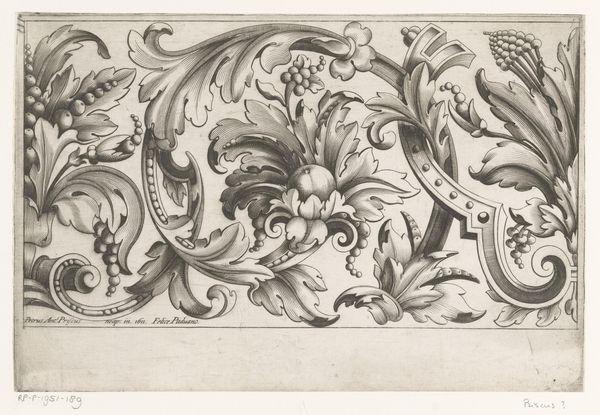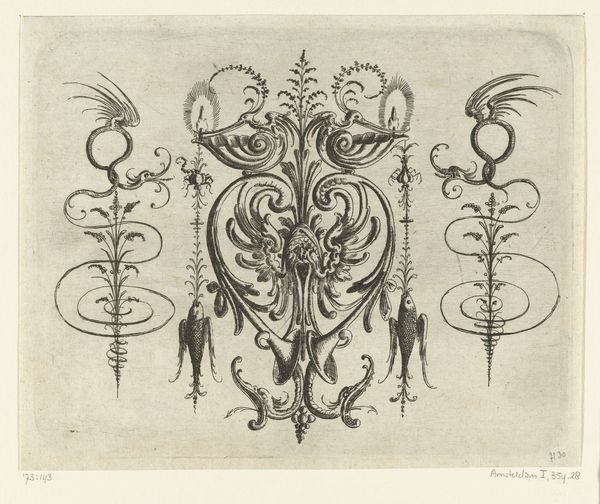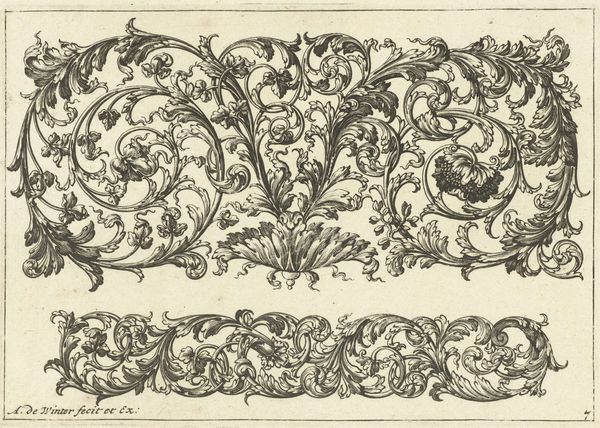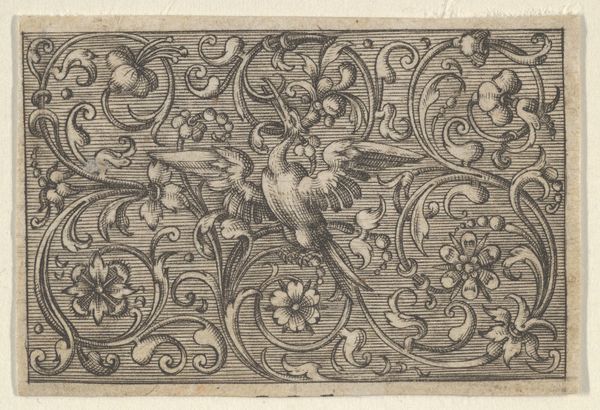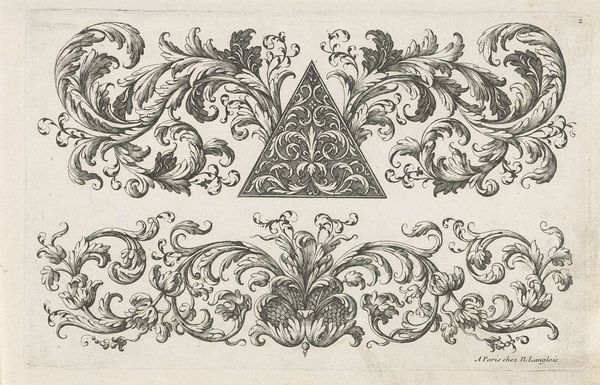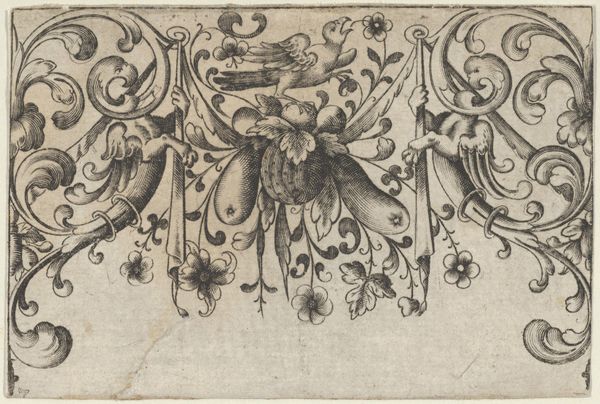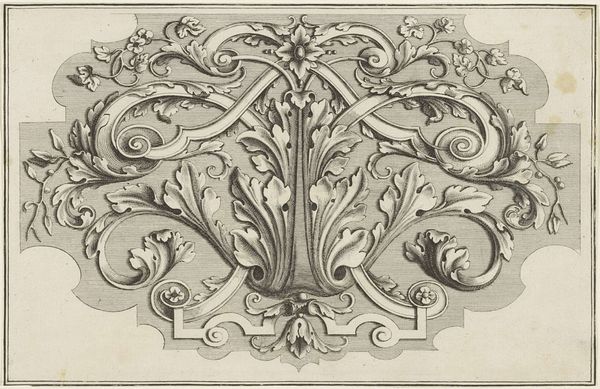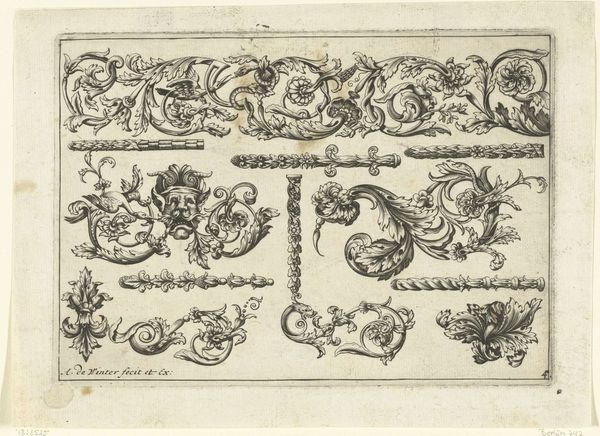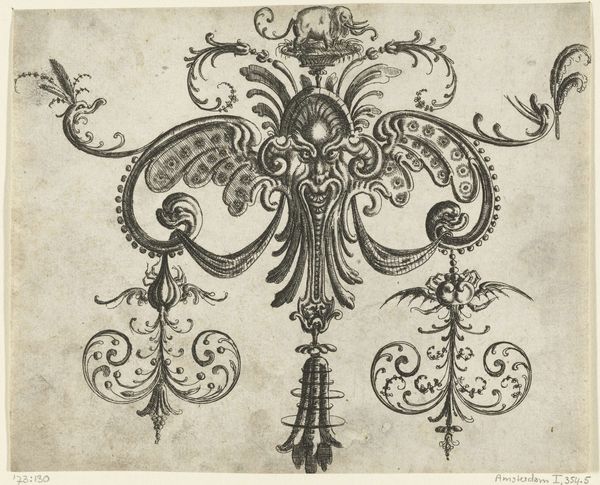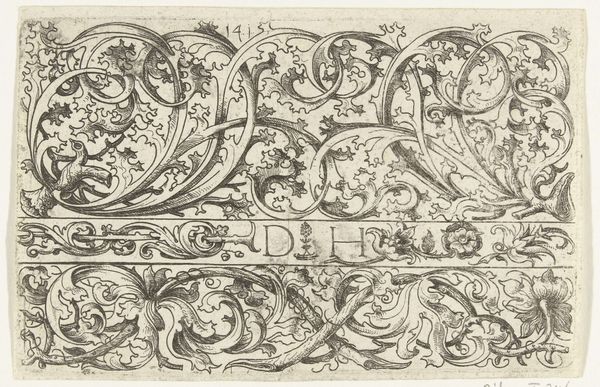
print, ink, engraving
#
baroque
# print
#
ink
#
geometric
#
line
#
decorative-art
#
engraving
Dimensions: height 119 mm, width 220 mm
Copyright: Rijks Museum: Open Domain
Curator: I find myself immediately drawn to the decorative richness of this 1668 engraving titled "Twee gekruiste pijpen waar bladranken uitkomen" – or "Two Crossed Pipes with Foliage" – created by Louis Cossin. It’s currently held in the Rijksmuseum collection. The interwoven detail and ornamentation seem emblematic of the Baroque period. What’s your take on it? Editor: It certainly possesses a certain… flourish. My initial response, however, is a certain unease with the juxtaposition of weaponry – represented by the pipes themselves – with what is essentially botanical, ornamental excess. There's a tension here. Curator: That's interesting. Consider that at the time, prints such as these often functioned as models for artisans. Ornament was integral to the visual culture. It's not just about beautification; it reflects social status, patronage networks, and evolving aesthetic tastes. The decorative served political aims. Editor: True, the period saw a rise in decorative art and, of course, commissioned art from wealthy patrons often aimed to display wealth, and political authority. However, even understanding its original context, the contrast of war instruments and frivolous botanical arrangements is stark. I question the glorification and desensitization that pieces like these enable when considering it in light of political conflict and the subjugated in this era. Curator: But were they weapons per se? Smoking pipes were commonplace, indicative of leisurely culture. I wonder, then, if Cossin attempts some commentary on excess – wealth embodied in material possessions and how readily that conflates with objects tied to destructive means? Editor: It's a possibility. Regardless, I still find it problematic to divorce the image entirely from what those pipes might implicitly mean for different contemporary groups. Curator: Fair point. Visual culture can both shape and reflect prevailing norms, necessitating continual questioning. Thanks for opening this additional lens through which we may see Louis Cossin's print. Editor: The exchange reminds us of art’s potency as an area of negotiation that exists despite its moment of origin, don’t you think?
Comments
No comments
Be the first to comment and join the conversation on the ultimate creative platform.
